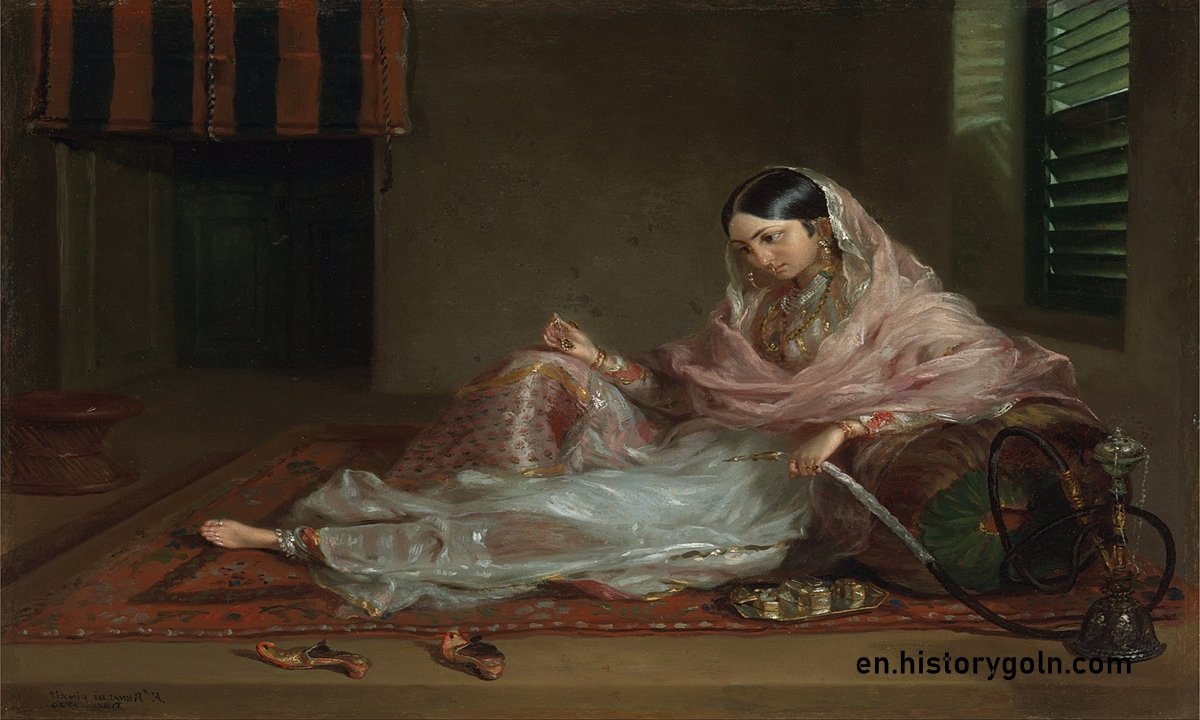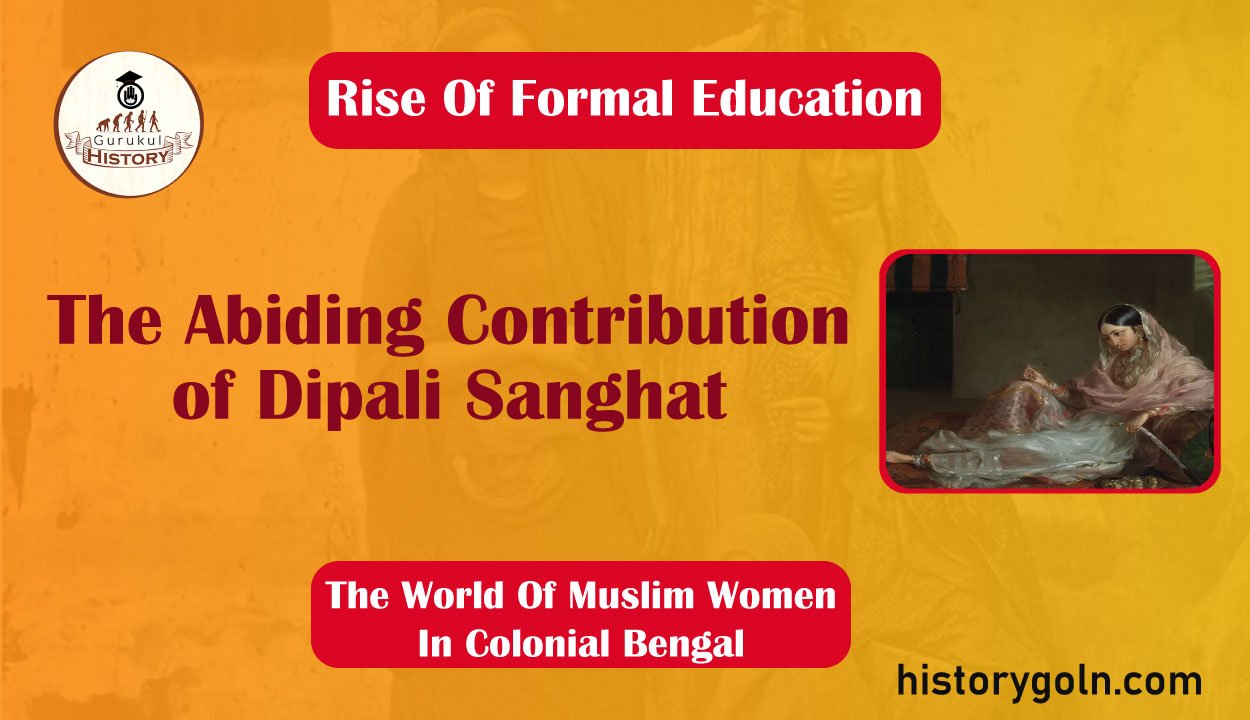Today our topic of discussion is The Abiding Contribution of Dipali Sanghat .
The Abiding Contribution of Dipali Sanghat

The story of Dhaka’s educational history will not be complete without a summary of Lila Nog’s activities through the Dipali Sangha. All said and done. Eden was an ‘elite institution with governmental patronage and British principals (Mrs Alfonso, Mrs Wills).
By the second decade of the twentieth Century, political events in India had given birth to an anti- British, nationalist movement as well as a more clandestine ‘terrorist movement aimed at the overthrow of the Raj. An expected the Hindu/Brahmo section of Bengal took the lead in these movements while the majority of Muslims, lagging behind in the race for education and government jobs. kept a cautious distance, occasionally joining in.
However, the point to be considered here is that the nationalist struggle had co-opted the women’s movement in Bengal, and the struggle had created a new set of attituden and goals which looked for more nationalistic modes of education.
In 1905 the Swadeshi movement was launched to protest against the partition of Bengal. Secret revolutionary societies were also formed. By the 1920’s activities of the radical wing of the movement were in full swing. In Dhaka, members of revolutionary societies such as Anushilan and Jugantar Samiti, began to contemplate the state of female education.
There was practically no school for girls during the period, save Eden which they felt adhered to British ideals and interests. “Nationalist Hindu/Brahmo and middle class families did not get much chance to send their girls to these schools and were also not inclined to,”49
Under these circumstances, Lila Nag, founder of Dipali Sangha, with the help of her co-activists, established four girl’s school in Dhaka between the years 1920-28:
- Dipali 1, soon to become Kamrunnessa Girls’ School
- Dipali 2. present day Bangla Bazar Girls’ School
- Nari Shiksha Mandir, present day Sher-e-Bangla School
- Purana Paltan Girl’s School
Dipali School-1 was founded sometime around 1924. Lila Nag realized the argent need for a Muslim Girls’ school and started working behind the scenes to help transform it into Kamrunnessa.
The story goes that Khwaja Ahsanullah, Nawab of Dhaka, had four wives, one of whom was named Kamrunnessa 50 (she was said to be of foreign origin, her father a jockey at the Ramna Race Course in Dhaka). Kamrunnessa gave birth to three daughters, Meher Bano, Peri Bano, and Aktar Bano. Aktar a spirited woman divorced her debauched husband to lead a life of independence looking after her estates.

Her trusted helping hand and advisor was a Hindu lawyer probably called Jogesh Chandra who was injured in an accident and succumbed to his injuries. Saddened by the death of her trusted friend, Aktar Bano donated the land where her office was situated to the Ram Krishna Mission for a temple.
More significant from the point of view of female education she also donated a piece of land for Dipali Sangha’s schools, stipulating that one of these be renamed after her mother Kamrunnessa.
Thus Kamrunnessa Girl’s school came into being in 1924, 50 odd years after Faizunnessa founded her school in Comilla and 13 years after Rokeya established hers. By now girls from respectable Muslim families were beginning to attend school in larger numbers. Faizunnessa and Sakhawat had loosened the hard attitudes to an appreciable extent,
From 1926 to 1942 Mrs Sujata Ray (wife of Dr. S.N. Ray, professor of English at Dhaka University) steered the fortunes of Kamrunnessa through the non-cooperation movement and closure of Government funds.
In 1947 it was declared a Government school with Mrs. Wills in charge as headmis tress. In 1949, Anwara Bahar, who had taught at Sakhawat and Bidyamoyee in Mymensingh, was appointed Headmistress of Kamrunnessa school. Anwara Was Fatema Khanam’s niece and Habibullah Bahar’s wife.
The course of the history of female emancipation thus sometimes contai- ned surprises. Such was the action of Aktar Bano’s refusing the conventio nal fate of the Begum with a debauched landed aristocrat for a husband. or donating land for a temple and a school, or administering her own est- ates. Such was the case also of her widowed sister Peri Bano who retreated to Calcutta, the epicentre of culture and modern education in Bengal.
Far from the constricting traditions of the illustrious Nawab family, Peri hand not only succeeded in educating her son, her daughter Zulekha Bano (1904 -1974) was also admitted to Diocesan School in Calcutta. Zulikha secured the Bachelor of Arts degree in Sanskrit from Calcutta University in 1927, with a first class.
Zulikha may be reckoned among the first few Bengali Muslim female graduates, though the anomaly was that her children, true to the custom of the Nawah family, could not speak good Bengali. Zalikha’s daugh- ter reminisced: “Where we could not speak proper Bengali, our mother would often recite Sanskrit verses.” Zalikha married Chulam Murshed. an officer in the Indian Civil Service, and entered a life of quiet domes- ticity.
But somehow the family reverted to traditional practice (though Chulam Murshed was not of the Nawab family) and Zulikha’s daughter did not receive the same kind of formal, institutional education as her mother though she was given a very good education at home.
Nari Shiksha Mandir, established by Lila Nag in 1928 after the founding of Kamrunnessa and Banglabazar as part of the Dipali scheme, functions today as Sher–Bangla girl’s School.
The school was located in the aristo cratic Rankin Street (Wari) of Dhaka and classes started with three young students under the shade of a tree. But it soon began to flourish and the school had to be transferred to the huge building donated by Maharaj Kumud Chandra Singh of Shosong, “Nari Shiksha’ was soon transformed into n high school. From 1932-1948 its administration was in the able hands of Usharani.
Lila Nag, who played a crucial role in the spread of female edu- cation in East Bengal, usually kept herself behind the scene, but it was at Nari Shiksha Mandir that she directly assumed the role of headmistress. Perhaps, for this reason, it was a school with a difference closest to the concept of an Ashram. It had provisions for young Hindu widows.
In those decades there were a few other girls’ schools in Dhaka and its vicinity some run on local initiative, some partially aided by the government or municipal bodies. The Morgan Girls’ School was founded in 1910 at Narayanganj by Mr Morgan, the then Chairman of the Narayanganj Municipality.
He also secured a monthly grant of Rs.300 for the school and the patronage of the local commissioners. The school still functions today as ‘The Morgan Girls’ High School. A lesser school was the Posta Girls school founded sometime in the early 1920s.
It was about to be abandoned when with the encouragement of the then school inspectress Mrinalini Sen, M. Fatema Khan revived the moribund school next to her house at 88 Urdu Road in old Dhaka. Fatems worked there till 1926 and the school was said to have been in existence till 1947.
Fariduddin Siddiky, Zamindar of Bolindi (near Dhaka), founded a prim ary school for girls at Becharam Deuri in Dhaka in 1932. He had been inspired by Maula Baksh. Asst. Director for education in Bengal who had appealed to the leaders in Muslim society to take up the issue of female education. Abdul Khaleq, Abdul Latif, and Dr. Bulbul, took the initiative in improving what was then known as the Muslim Girls’ School at hecharam Deuri (now the Anwara Begum Girls’ High School).

However, the contribution of a single lady called Ustad Amma in the success of this school was memo-rable. “Ustad Amma’ (mother-Teacher) alias Sufin Khatun would travel long distances to collect little girls and set them down in a makeshift class. Like Rokeya she went from door to door soliciting scholars.2 The school was founded in the year of Rokeya’s death and functions to this day.
See more:
